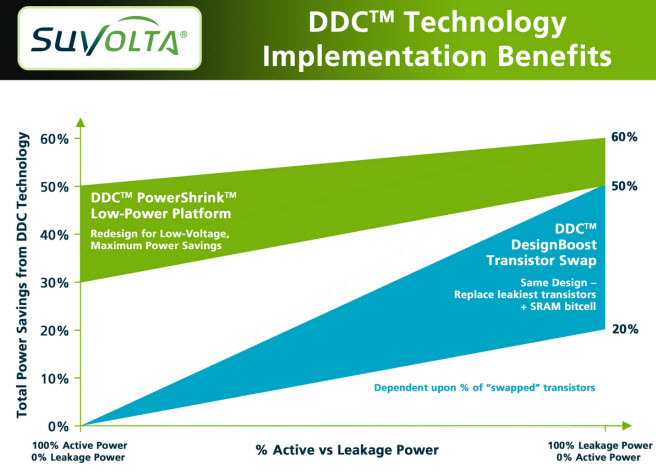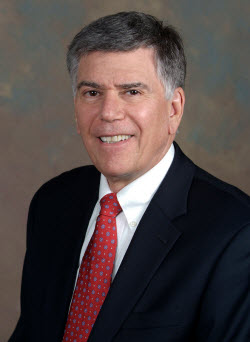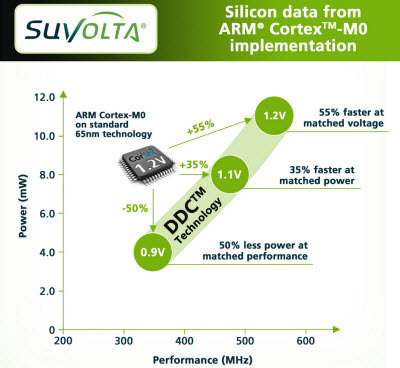Power savings technology startup SuVolta has hit some big milestones in its quest to reduce power consumption in a wide range of devices by 50 percent. Such technology is critical as chip makers cram more powerful electronics into smartphones and tablets while trying to extend battery life at the same time.
The Los Gatos, Calif.-based company is announcing big progress today for its Deeply Depleted Channel technology, which refashions the transistor, the basic building block of all electronic devices.
It has proven that it can cut power consumption by 50 percent with the manufacture of a 65-nanometer ARM chip. It has cut a deal to make 28-nanometer chips with contract chip manufacturer United Microelectronics Corp. And it has also hired tech veteran Louis Parrillo as chief operating officer.
The technology addresses a fundamental problem in the physics behind transistors, the basic building blocks of all electronic chips. If it works, the technology could help improve battery life in portable products — smartphones, tablets, and notebooks — and offer an alternative to a revolutionary Intel technology known as Tri-Gate.
Both SuVolta and Intel are working on ways to extend Moore’s Law, the notion put forth in 1965 by Intel chairman emeritus Gordon Moore that the number of transistors on a chip will double every two years. Japan’s Fujitsu is in full production with SuVolta’s technology.
SuVolta attacks a problem called transistor variation. It minimizes the electrical variation in each of the millions of transistors on a chip. On the manufacturing level, SuVolta merely tweaks the “recipe” for making a chip. The result is that it reduces the variation in voltage for a chip, allowing for efficiency improvements.
SuVolta has funding from Kleiner Perkins Caufield & Byers, August Capital, NEA, Bright Capital, Northgate Capital and DAG Ventures. The company began life as DSM Technologies in 2006, but went through a reboot in 2009. It has raised $76.5 million to date, but ony $39.8 million of that since 2009.
The latest achievements further validate the company’s approach to solving the power problem at the heart of nearly all electronic systems, said Jeff Lewis, senior vice president of sales and marketing at Suvolta, in an interview with VentureBeat. As we move beyond mobile devices to an “internet of things,” we’ll need even more low-power semiconductors, Lewis said.
Suvolta revealed today that its Deeply Depleted Channel technology was used to make an ARM Cortex-M series processor that showed both significant speed gains and a big power reduction. The chip uses 50 percent less power at the 350-megahertz operating speed. It has 35 percent increased operating speed at matched power. And it has 55 percent increased operating speed when operated at matched supply voltage.
Meanwhile, the deal with UMC will let SuVolta provide a way to make more advanced chips that use 28-nanometer manufacturing. A nanometer is a billionth of a meter, and the smaller the number associated with a chip manufacturing process, the more miniaturized and more difficult it is to create. UMC will use SuVolta’s DDC with its high-K metal gate manufacturing process.
Parrillo, meanwhile, will help the company expand the adoption of DDC technology in his new job. Parrillo has worked for years at both chip startups and large companies. He was previously vice president and chief technologist in the NVM/storage division at Rambus. He also worked at Unity Semiconductor, Spansion, and Motorola Semiconductor.
“SuVolta has shown that the DDC technology, when incorporated into an ARM processor, can provide additional power reductions or a significant performance boost. As the Internet of Things continues to expand, innovative ultra-low power technology for sensors and other devices will be vital to ensure that ARM remains at the forefront of this opportunity,” said Noel Hurley, vice president, strategy and marketing, Processor Division, ARM.
Lewis said there are six manufacturing programs under way, including UMC and Fujitsu. SuVolta has 50 employees.
VentureBeat's mission is to be a digital town square for technical decision-makers to gain knowledge about transformative enterprise technology and transact. Learn More




